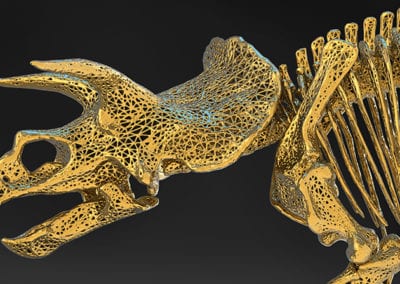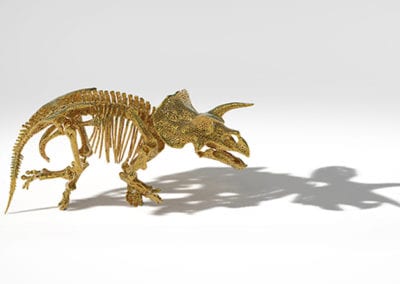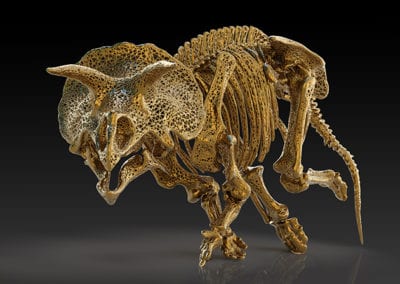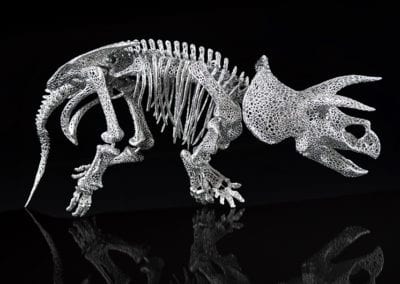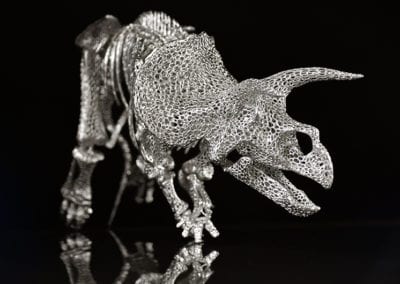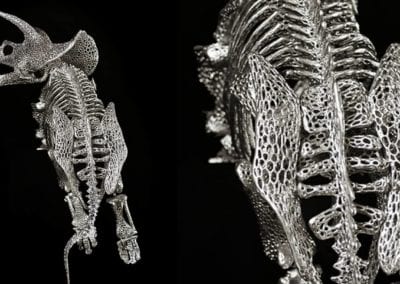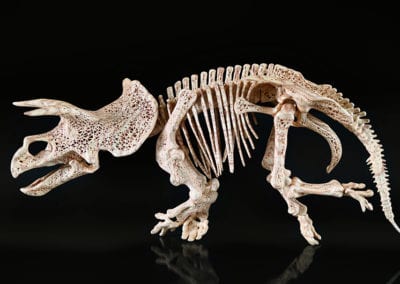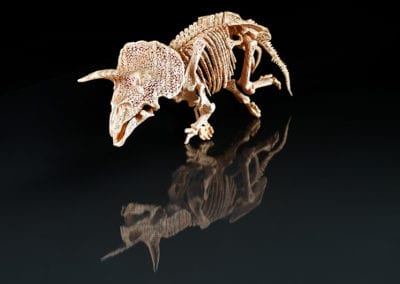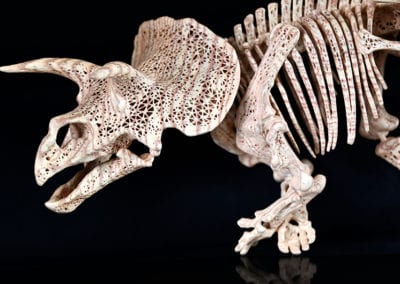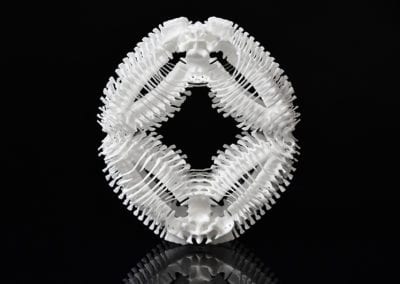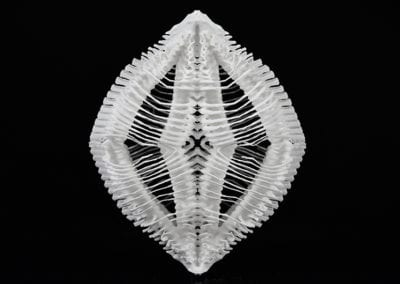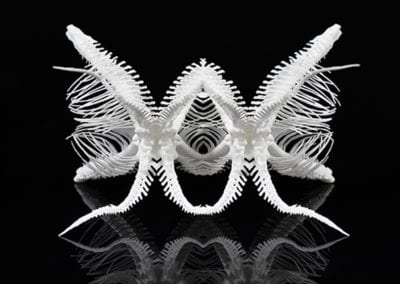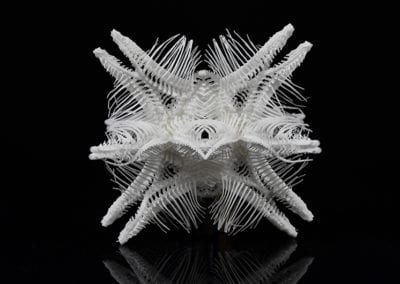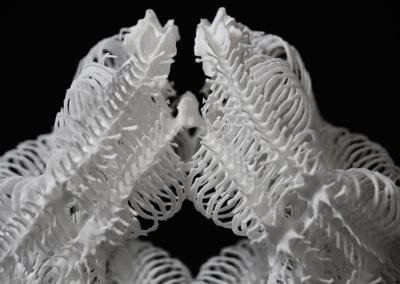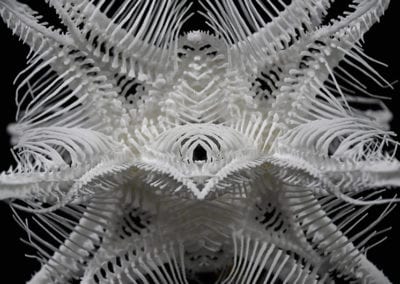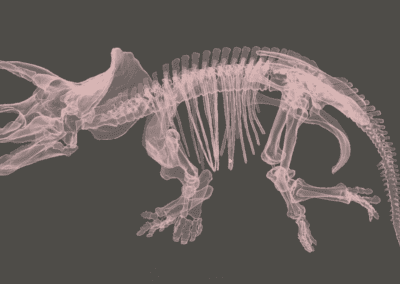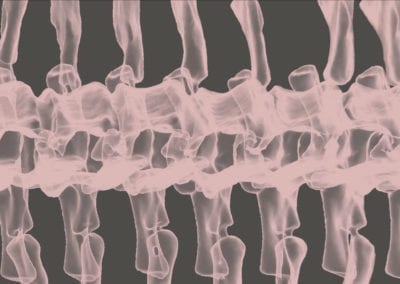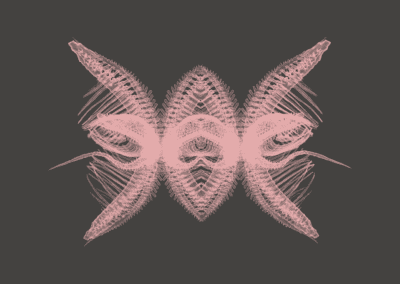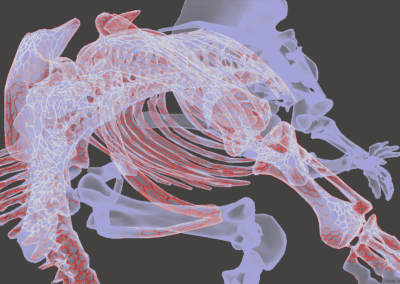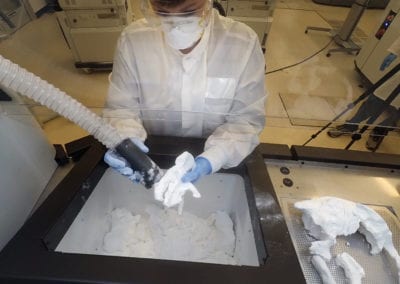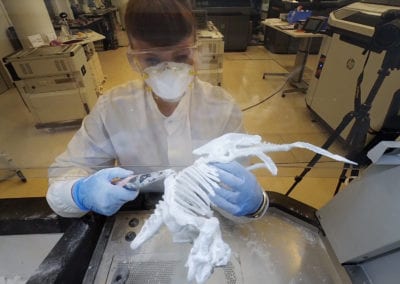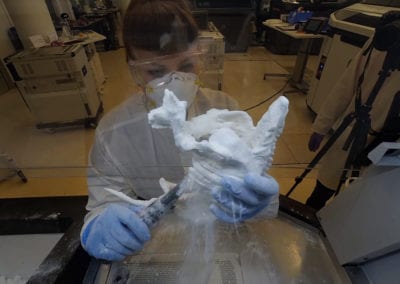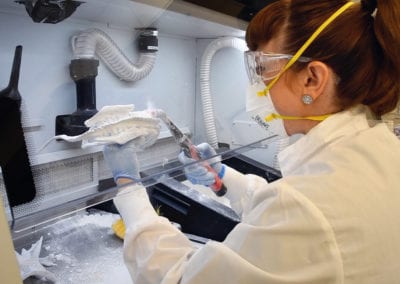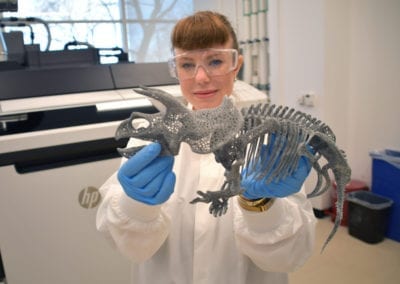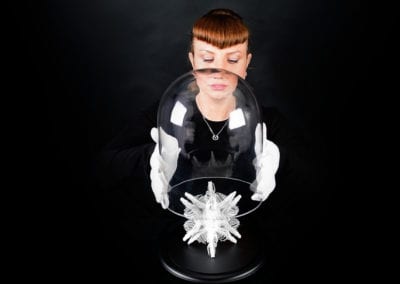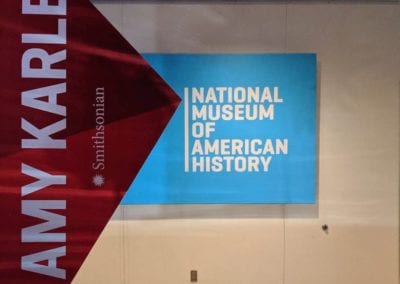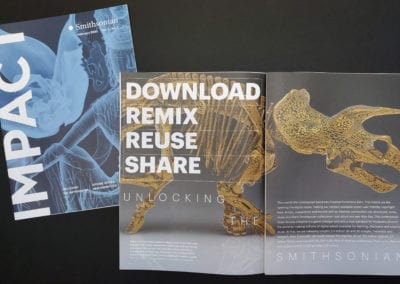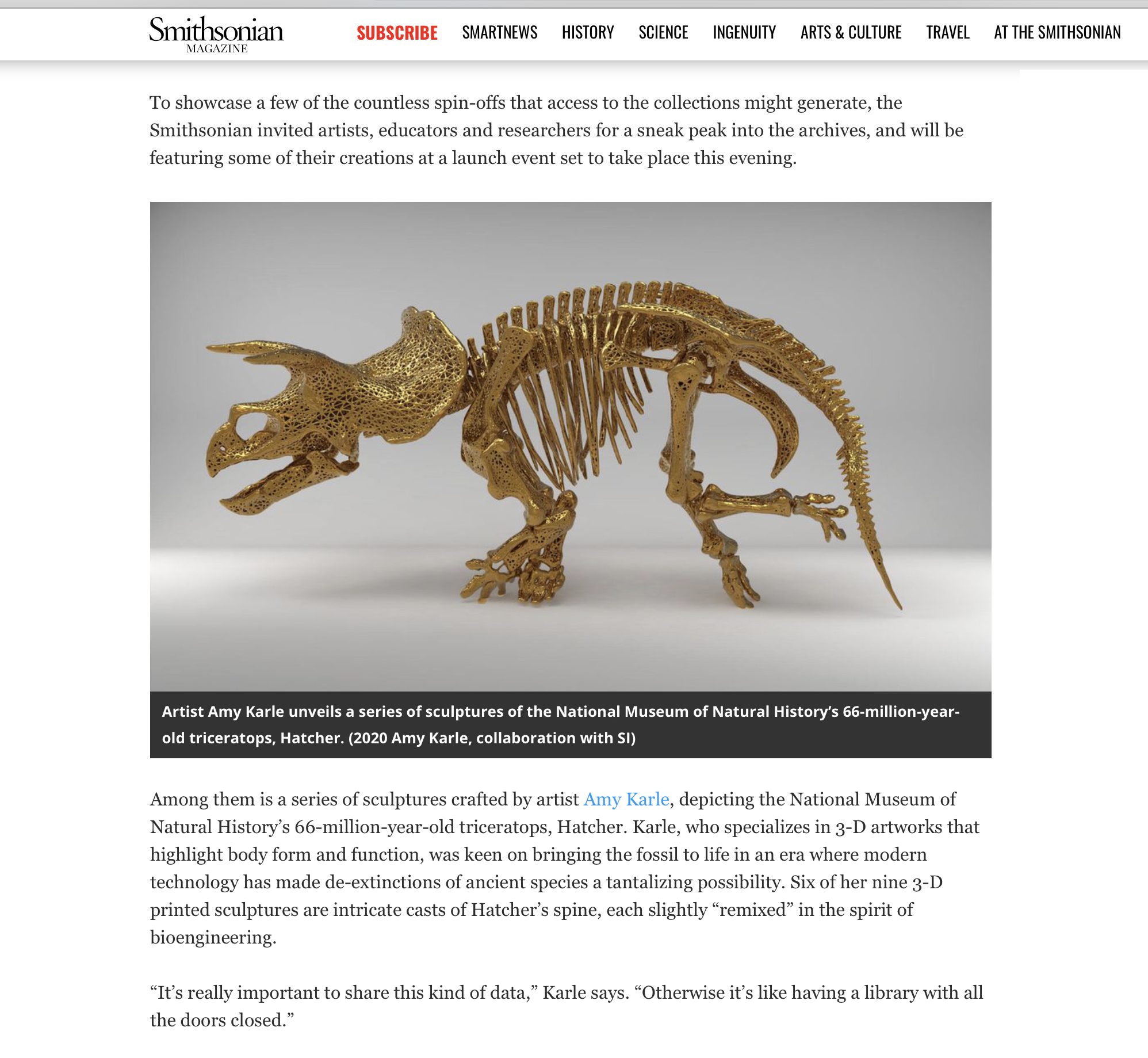Smithsonian Open Access
Launch and Exhibit
25 February 2020
Smithsonian National Museum of American History
1300 Constitution Ave NW
Washington, DC 20560 USA
Ongoing online at at https://www.si.edu/openaccess

COLLABORATION: Amy Karle & The Smithsonian : “Regeneration Through Technology”
EXHIBITING: Artworks made in collaboration with The Smithsonian
EVENT: Smithsonian Open Access Launch event
Artist Amy Karle collaborated with the Smithsonian and used a 3D scan of a Triceratops skeleton from the National Museum of Natural History as the basis to create nine sculptures that explore the impact of technology on evolution. This collection of artworks made in collaboration with The Smithsonian will be exhibited at the Smithsonian Open Access launch event and online at https://www.si.edu/openaccess.
Amy Karle Smithsonian Collaboration: “Regeneration Through Technology” Sculpture Series
Leveraging Smithsonian 3D scan data of a fossilized Triceratops skeleton as the basis of inquiry into the past, present, and future, Karle recently debuted artworks made in collaboration with The Smithsonian Institution’s Museum of Natural History and The Smithsonian’s 3D Digitization Program Office and exhibited in conjunction with the launch of the Smithsonian Open Access Initiative.
The basis for this collection by Karle is “Hatcher,” a 66-million-year-old Triceratops skeleton in the Smithsonian National Museum of Natural History who made history as the first “digital dinosaur.” In the context of cutting-edge digital, biotechnological, computational and additive manufacturing developments, Karle expands on Hatcher’s legacy by opening an inquiry into what representation and composite with computer-assisted technology means for us now and into the future.
Technologies have led to extinction and can lead to de-extinction. As manufactured alterations implement drastic change, future evolution will proceed at a greatly accelerated rate. “Deep Time and The Far Future”, 2020 by Amy Karle in collaboration with The Smithsonian explores the relationship between reconstructing the past through technological regeneration and the importance of a deeper awareness of the long view of time in this process.
AMY_KARLE-Deep Time and The Far Future 2020 n02 image_03 and detailTriceratops Smithsonian Institution Collaboration websize
“Morphologies of Resurrection”, 2020 by Amy Karle in collaboration with The Smithsonian is a series of 6 biocompatible, 3D printed structures that imagine new forms based on extinct species, exploring hypothetical evolutions through technological regeneration.

Amy Karle created a series of nine artworks using 3D scan data of a 66-million-year-old Triceratops from the Smithsonian’s National Museum of Natural History to study what representation and composite with computer-assisted technology means for us now and into the future, leveraging this technology in both her research and as tools in the process of creating the final artworks.
The Smithsonian Open Access initiative removes Smithsonian copyright restrictions from nearly 3 million 2D and 3D digital items so that people everywhere can use, transform and share this content for any purpose for free and for any purpose. This allows anyone with internet access to download, share, and reuse millions of the Smithsonian’s images and data. This includes images and data from across the Smithsonian’s 19 museums, nine research centers, libraries, archives, and the National Zoo. The program spans the worlds of arts, sciences, history, culture, technology and design. The Smithsonian will continue to add items on an ongoing basis.
This is the largest and most interdisciplinary open access program to date among museums and cultural institutions. Smithsonian Secretary Lonnie G. Bunch III said: “Through this initiative, we are empowering people across the globe to reimagine and repurpose our collections in creative new ways”.
To celebrate and demonstrate the Open Access initiative, the Smithsonian invited collaborators to utilize the collections create original works and discover new insights, including Artist Amy Karle whose artworks continue to be featured on the Smithsonian Open Access’ homepage.
“Open access exemplifies the Smithsonian’s core mission: the ‘increase and diffusion’ of knowledge our institution has fostered for nearly 175 years,” said John Davis, interim director of the Cooper Hewitt, Smithsonian Design Museum, who led the initiative from its inception. “With Smithsonian Open Access, we’re inviting people everywhere to make that knowledge their own––to share and build on our digital collections for everything from creative works, to education and scholarly research, to bold innovations we have yet to imagine.” (above text adopted from the Smithsonian)
This is a huge milestone leading the way in sharing collections with a larger audience in the digital era.
More information and links to platforms launched to facilitate Smithsonian’s vision: https://www.si.edu/openaccess/updates/21st-century-diffusion
A VERY SPECIAL THANK YOU TO:
The Smithsonian Institution, The Smithsonian National Museum of Natural History, The Smithsonian Digitization Program Office, Smithsonian Open Access, HP and HP Labs, and to all those whose generous support made this project possible.


